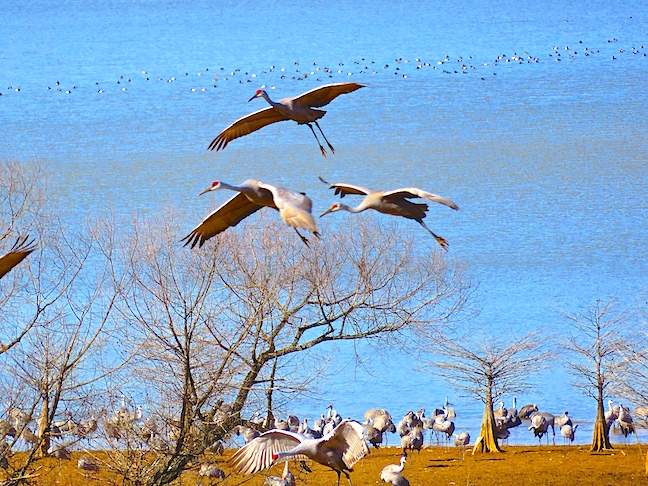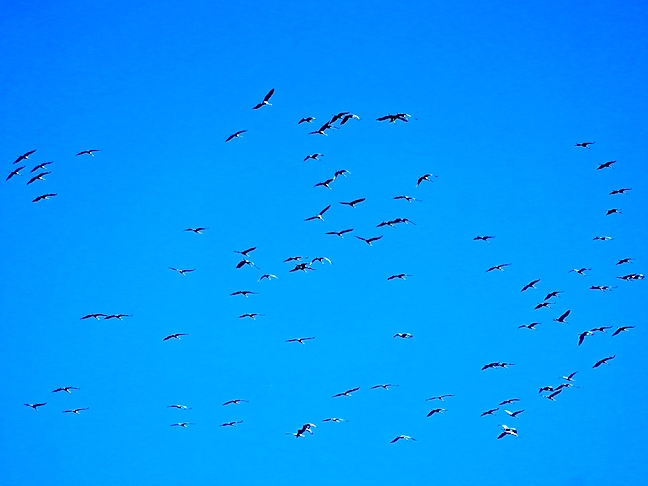
Karen and I had to take our boat to Cleveland, TN for repairs. The bugling of Sandhill Cranes flying over us, as they passed in groups of hundreds, signaled their annual migration was in full swing. 29.000 Sandhill Cranes winter in the nearby Hiwassee Wildlife Refuge.

On Wednesday (1-12-22) we drove to the Hiwassee Wildlife Refuge on the northeast end of Lake Chickamauga near Birchwood, TN. The refuge covers 2,500 acres of land and 3,500 acres of water The area is closed during the winter migration except for the lookout platform.
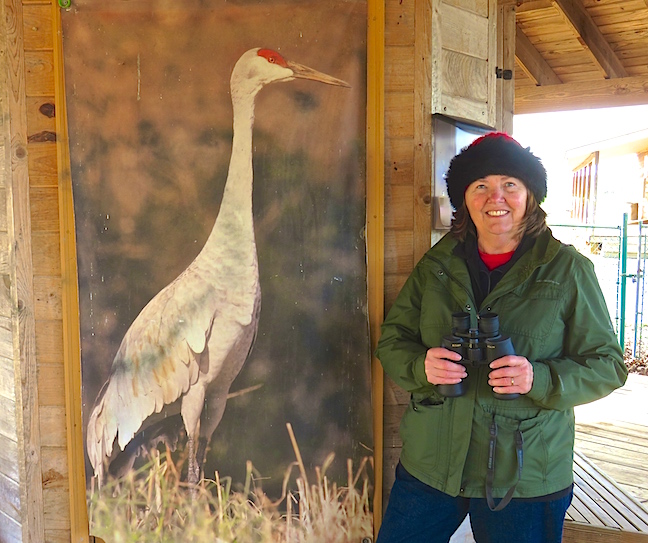
Karen is standing next to a life-size picture of a Sandhill Crane. The majestic birds can grow over 5-feet tall and have wingspans over 6-feet.

The 31st, annual Tennessee Sandhill Crane Festival is January 15-16-2022 in the small, historic town of Birchwood, TN. Only shuttle buses from the festival are allowed to access the Refuge’s lookout platform during the event, so we chose to go when we could drive ourselves there with much fewer spectators on hand.

Birds arrived constantly while we were at Hiwassee Refuge. For such a large animal, they are extremely graceful in flight.
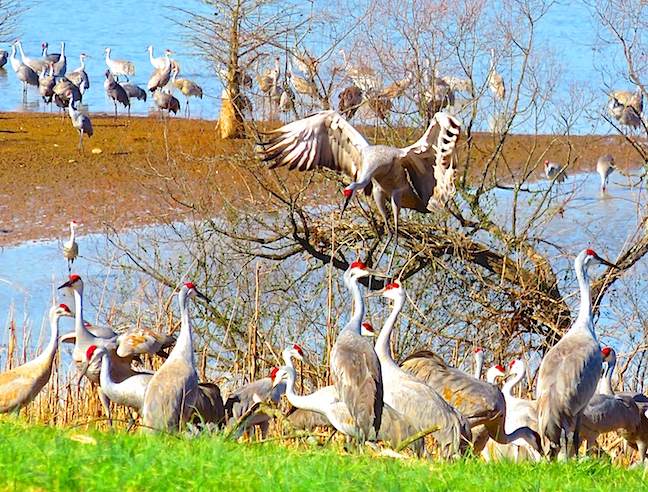
Adult Sandhill cranes can weigh 10-14 pounds. They flare out huge wings and drop spindly legs just before touchdown, then float gracefully to stick the landing.

Canadian Geese were dwarfed but unfazed while hanging out with the Sandhill Cranes. Mallard and Gadwall Ducks, Bonaparte’s and Ringbilled Gulls, Great Blue Herons, Bald Eagles, Golden Eagles and Osprey are also present in large numbers during the winter.

With the vast number of Sandhill Cranes crowded together, some bickering among birds is to be expected. The squabbles we saw lasted only seconds. Sandhill Cranes are pretty chill.
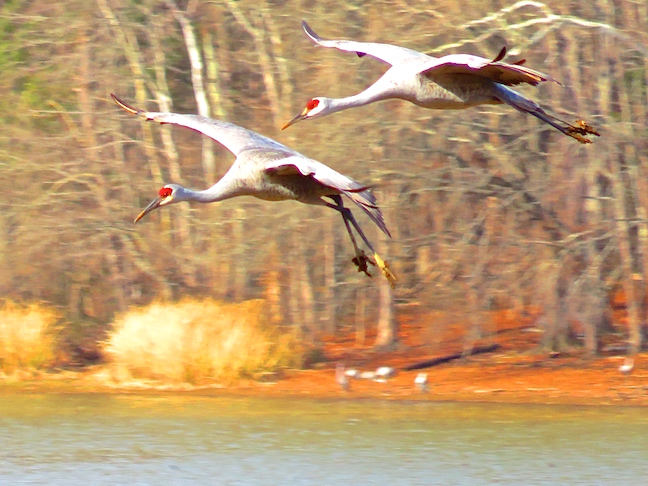
Hiwassee Wildlife Refuge attracts the largest winter flock of Sandhill Cranes in the southeast, except for Florida. Their core breeding grounds are in Ontario, Michigan and Wisconsin. The birds were nearly decimated in the 1800s as they are considered one to the tastiest of all the migrating fowl. We’re happy to host them on our home lake as often as they’d like to visit.


